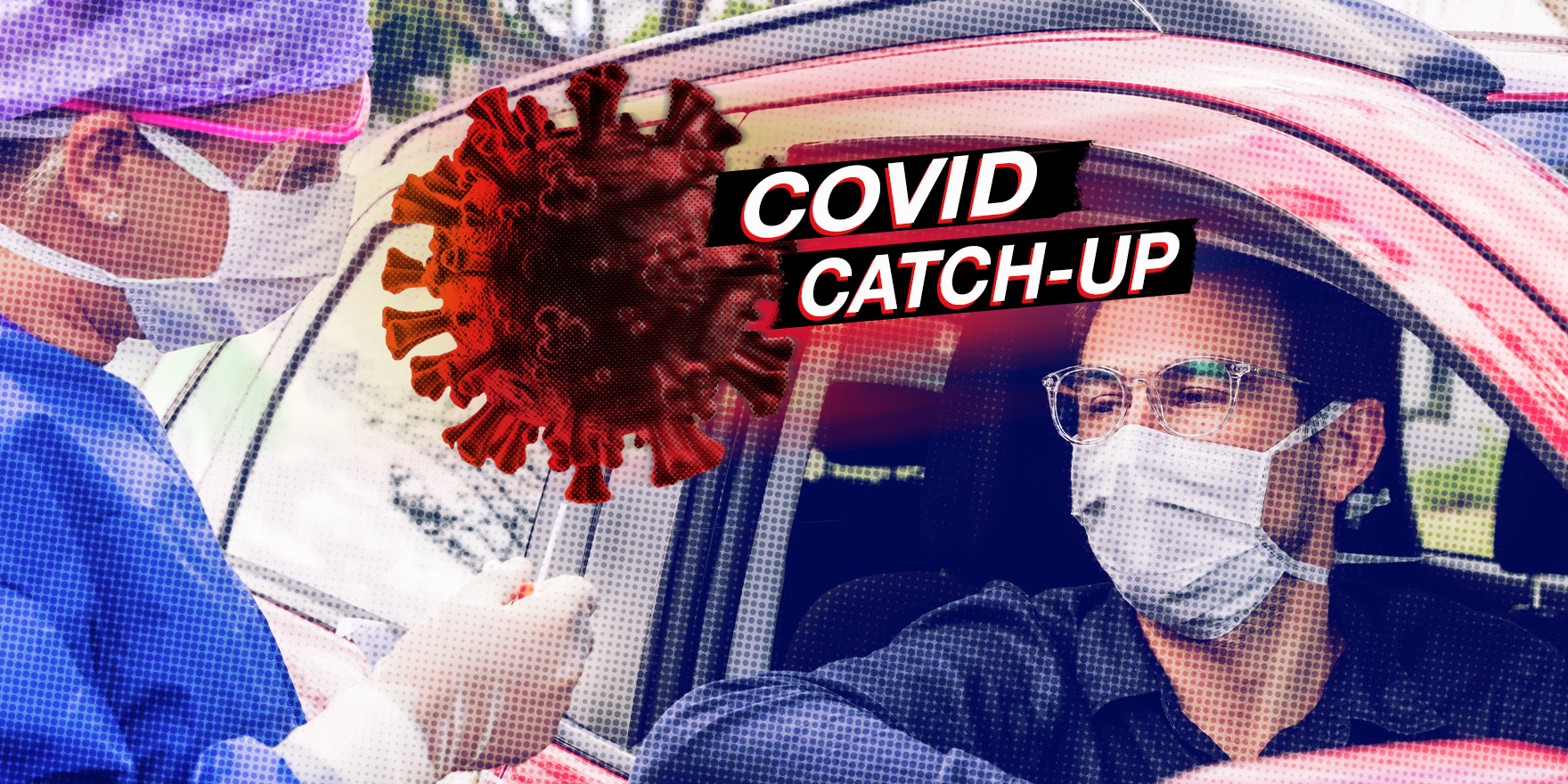And a study has compared saliva and nasopharyngeal swab testing head to head.
Welcome to Allergy & Respiratory Republic‘s COVID Catch-Up.
It’s the week’s COVID-19 news into one convenient post. Email bianca@biancanogrady.com with any tips, comments or feedback.
-
- Nearly nine out of 10 Australians and three-quarters of people globally say they would get a COVID-19 vaccine if one were available, according to a survey done on behalf of the World Health Organisation.The poll of nearly 20,000 adults from 27 countries found that nearly 60% of respondents don’t expect a vaccine to become available this year, but 88% of Australians said they would get vaccinated; the third-highest figure after China and Brazil.Among those who said they wouldn’t get vaccinated, nearly half said it was because of concerns about side effects, one-quarter because of doubts about effectiveness, 18% because they perceived they weren’t at enough risk of COVID-19, and another 18% because of general opposition to vaccines.
- Can COVID-19 be reliably detected in saliva? Two studies have found conflicting results when comparing saliva with nasopharyngeal swabs as a means of testing for COVID-19.The first study, published in the Annals of Internal Medicine, was a prospective study involving 1939 high-risk individuals with few or no symptoms who presented for testing and gave both nasopharyngeal swabs and self-collected saliva samples. The samples were all tested for SARS-CoV-2 with RT-PCR.Thirty-four participants tested positive both on the nasopharyngeal and saliva samples. However 22 participants tested positive with the nasopharyngeal swab only, and 14 tested positive with saliva alone.The authors commented that saliva testing offers several advantages, in that it doesn’t require trained staff, can be done outside testing centers, and could be better tolerated in children.“Despite a lower estimated rate of detection relative to swab testing, saliva testing may be of particular benefit for remote, vulnerable, or challenging populations,” they wrote.
A second study, published as a research letter in the New England Journal of Medicine, involved 70 people hospitalised with COVID-19 and compared saliva with nasopharyngeal swabs. This revealed that saliva had a higher number SARS-CoV-2 RNA copies than nasopharyngeal swabs, and the saliva samples were more likely to still be positive 10 days after the COVID-19 diagnosis.
“These findings suggest that saliva specimens and nasopharyngeal swab specimens have at least similar sensitivity in the detection of SARS-CoV-2 during the course of hospitalization,” the authors wrote.
They did a further study in 495 asymptomatic healthcare workers, 13 of whom tested positive with saliva samples. Nine of these also provided nasopharyngeal samples but seven of these were negative.
- Australia’s National COVID-19 Clinical Evidence Taskforce has published a new flowchart with guidance on managing older and frail patients with COVID-19. The guidance covers subjects such as the goals of care, communication, polypharmacy, and management of delirium and anxiety.The latest taskforce update also advises using prone positioning for at least three hours a day in adults with COVID-19 and respiratory symptoms who are receiving any form of non-invasive supplemental oxygen therapy.For adults with COVID-19 and respiratory symptoms who are receiving any form of supplemental oxygen therapy and have not yet been intubated, consider prone positioning for at least 3 hours per day as tolerated. When positioning a patient in prone, ensure it is used with caution and accompanied by close monitoring of the patient. Use of prone positioning should not delay endotracheal intubation and mechanical ventilation in patients with COVID-19 who are deteriorating despite optimised less invasive respiratory therapies.
- The fatality rate from COVID-19 is significantly lower in children than in the general population, according to a study published in the BMJ.A prospective study of 651 children aged under 19 years admitted to 138 UK hospitals with confirmed SARS-CoV-2 between January and July 2020 found the overall in-hospital case fatality rate was just 1%, compared to 27% for the entire age cohort across the same period. All the deaths occurred in individuals with profound comorbidities; three were neonates with severe comorbidities, two were aged 15-18 with neurodisabilities and pre-existing respiratory issues, and one was undergoing chemotherapy and had bacterial sepsis.Overall, 18% of the children were admitted to intensive care and 9% were put on ventilators, and 11% of 11% of 456 patients assessed met the WHO criteria for multisystem inflammatory syndrome – the condition with similar presentation to Kawasaki disease and toxic shock syndrome.
- Obesity is associated with significantly greater risks of developing COVID-19, being hospitalised with it, being admitted to ICU and dying from it, new research suggests.A systematic review and meta-analysis of 75 studies, published in Obesity Reviews, suggested individuals with obesity had at least a 46% higher odds of being COVID-19-positive, 113% higher odds for hospitalisation, 74% higher odds of ICU admission and 48% higher odds of death.
Get Bianca’s daily COVID Catch-Up at medicalrepublic.com.au.



